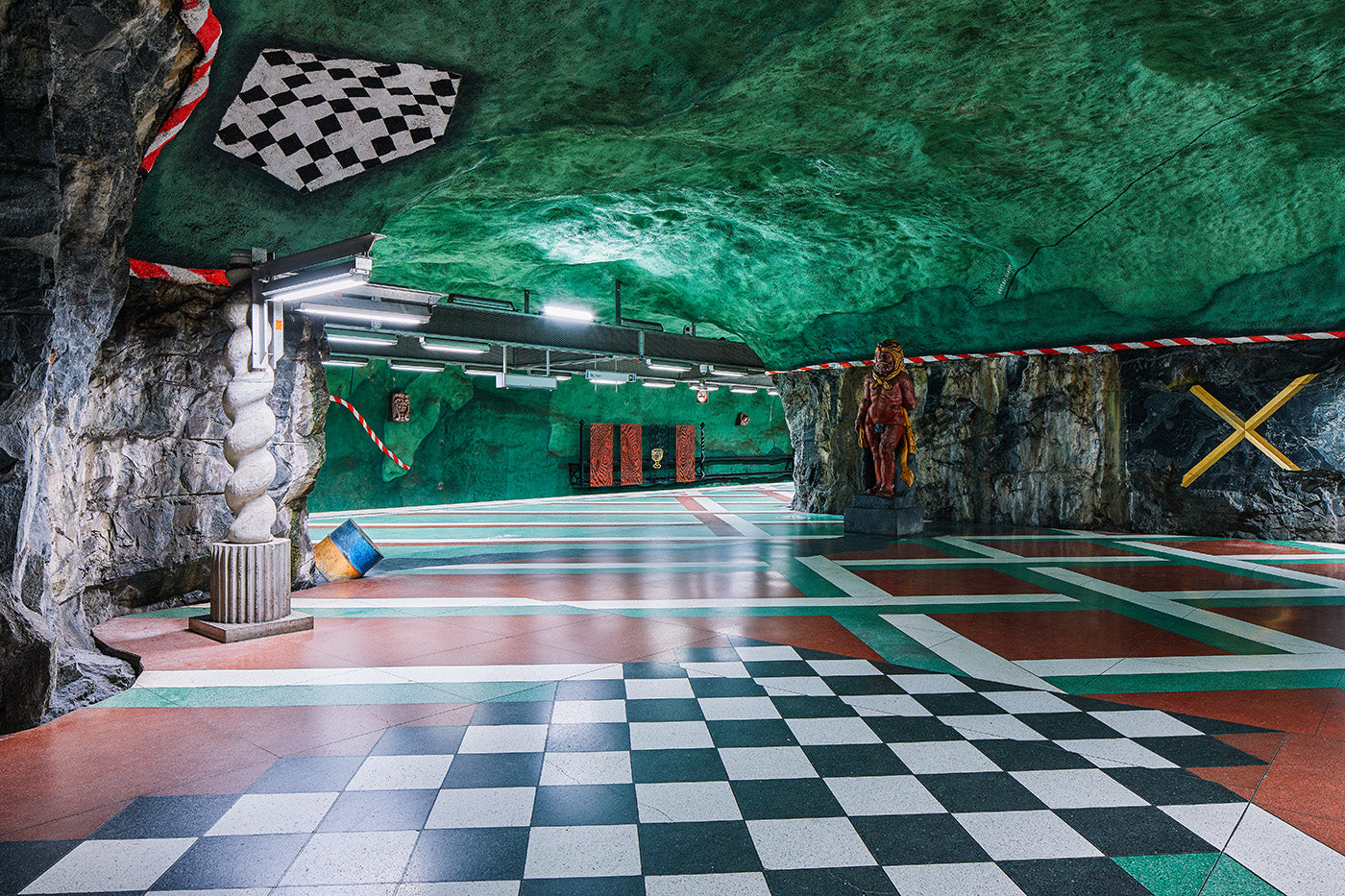Your Cart is Empty
Buy a book, plant a tree.
David Altrath guides us into the majestic tunnels and cave-like flux that forms one of the world’s most unique transit systems

A contemporary experiment that tests human emotions during the mundane commute beneath a city, Stockholm’s metro system is a marvel often described as the longest art exhibition in the world. “Unifying art and design in a functional metro station show how efficient architectural concepts influence the wellbeing of people in public spaces,” is how David Altrath explains his photography series to us.

Since its inception in 1952, the capital’s metro system has been both a design and beauty ode to engineering and artistic dexterity. For two nights, German photographer Altrath roamed the empty stations during the pristine silence of Sweden’s prolonged polar nights. Void of crowds, commuters, and graffiti, the Hamburg-based traveler focused on the clear view of space, perspective, and light.


Most Stockholm stations feature sculptures, marble statues, paintings, installations, and inscriptions from the 1950s to the 2000s. 94 out of the 100 stations are decorated with art installations, to which a total of 250 artists have contributed. Artist Richard Nonas placed 17 bench-like seats along with the platform at Skarpnäck, Gösta Sillé’s low-relief sculptures at Duvbo poke out like fossils, and Takashi Naraha’s The Heaven of Cube brings a sky blue to the depths of the metro.

Altrath’s unsoiled and precise imagery captures the present atmospheres of the lonesome space in a natural way. He tells us, “My aim is to incorporate a stage-like narrative into my pictures, to speak for the object's special features.” Through the depth and striking light, he documents the contrasting mellowness and at times hair-raising stations reminiscent of Stanley Kubrick’s elevator scene from The Shining.

Swedish playwright August Strindberg once declared that "art cannot continue to be exclusive to just some people, because then it won’t be long-lived.” For nearly six decades, Stockholm’s metro art installations have worked as a social experiment to its commuters and tourists. Architectural gargoyles, stone carvings, and mosaics combat commuter stress and anxiety through the remedy of art and cognitive escapism. While metropolitan communities often live in high-intensity environments, initiatives to tackle commuter stress can result in better urban health and better cities.
Find out more about city design and how it can create a higher standard of living through The Monocle Guide to Building Better Cities.